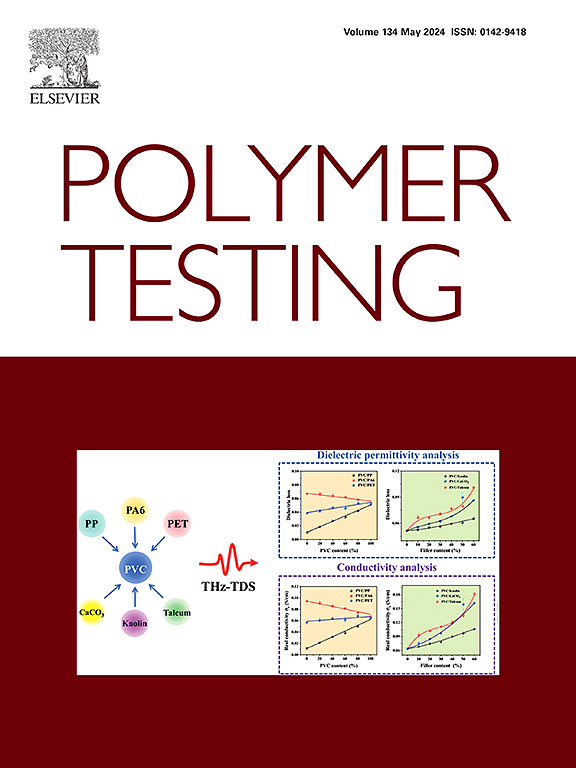Modelling the curing kinetics of DGEBA-MTHPA with DMP-accelerator concentration dependence
IF 5
2区 材料科学
Q1 MATERIALS SCIENCE, CHARACTERIZATION & TESTING
引用次数: 0
Abstract
The curing of epoxy anhydride systems is often modelled using various phenomenological models. These models give a relationship between the cure rate and the temperature and degree of cure of the resin. Typically, epoxy anhydride systems are used in combination with an accelerator to lower the cure temperature and speed up the cure process. In this study, the influence of 2,4,6-Tris(dimethylaminomethyl)phenol (DMP) accelerator on the cure kinetics of a Bisphenol A diglycidyl ether (DGEBA or BADGE)-Methyltetrahydrophthalic anhydride (MTHPA) mixture was investigated using isothermal and dynamic modulated differential scanning calorimetry (MDSC) measurements. As expected, the accelerator increased the cure rate and lowered the reaction start temperature. The Kamal-Sourour model, incorporating a Fournier diffusion factor, was successfully fitted to the MDSC data. The Kamal-Sourour parameters indicate that the accelerator primarily affects the non-autocatalytic part of the reaction. Increasing the accelerator concentration also resulted in earlier vitrification of the resin up to 6 % degree of cure and 3–4% higher achievable cure degrees at isothermal temperatures. The effect of the accelerator was integrated into the Kamal-Sourour model, yielding a set of parameters that can be used to calculate the cure rate as a function of temperature, cure degree, and accelerator concentration with a mean error of 3.5 %.
求助全文
约1分钟内获得全文
求助全文
来源期刊

Polymer Testing
工程技术-材料科学:表征与测试
CiteScore
10.70
自引率
5.90%
发文量
328
审稿时长
44 days
期刊介绍:
Polymer Testing focuses on the testing, analysis and characterization of polymer materials, including both synthetic and natural or biobased polymers. Novel testing methods and the testing of novel polymeric materials in bulk, solution and dispersion is covered. In addition, we welcome the submission of the testing of polymeric materials for a wide range of applications and industrial products as well as nanoscale characterization.
The scope includes but is not limited to the following main topics:
Novel testing methods and Chemical analysis
• mechanical, thermal, electrical, chemical, imaging, spectroscopy, scattering and rheology
Physical properties and behaviour of novel polymer systems
• nanoscale properties, morphology, transport properties
Degradation and recycling of polymeric materials when combined with novel testing or characterization methods
• degradation, biodegradation, ageing and fire retardancy
Modelling and Simulation work will be only considered when it is linked to new or previously published experimental results.
 求助内容:
求助内容: 应助结果提醒方式:
应助结果提醒方式:


